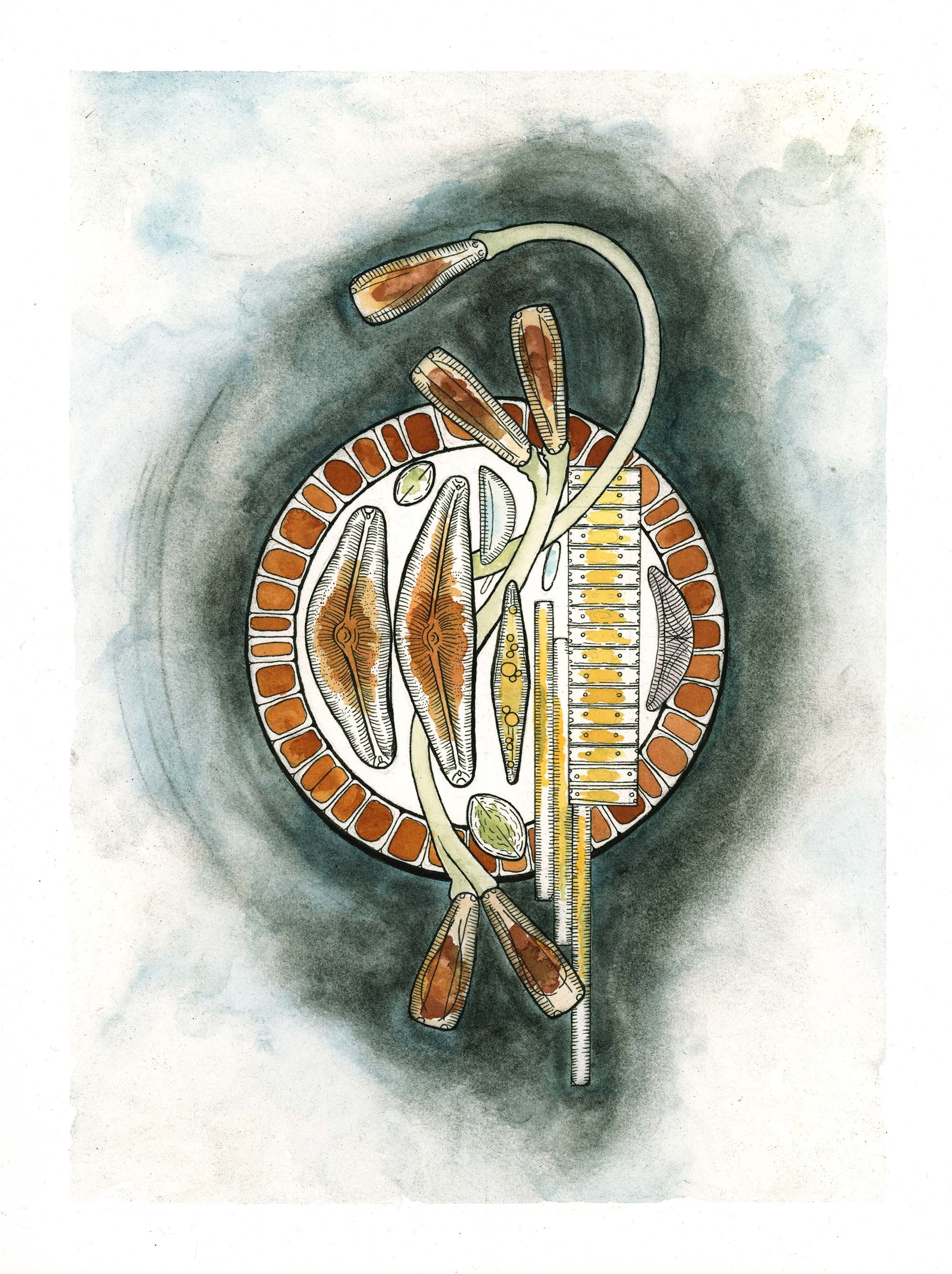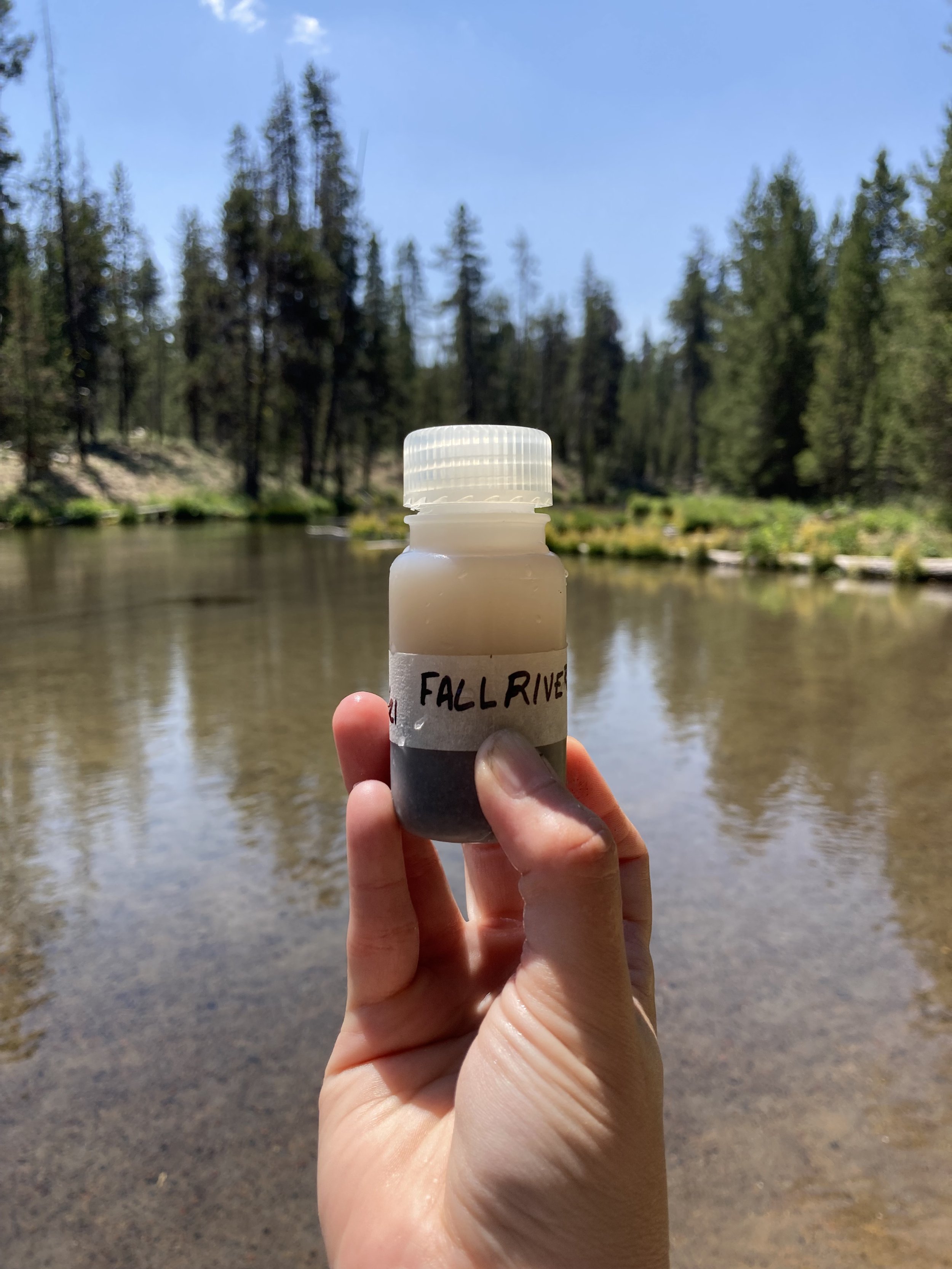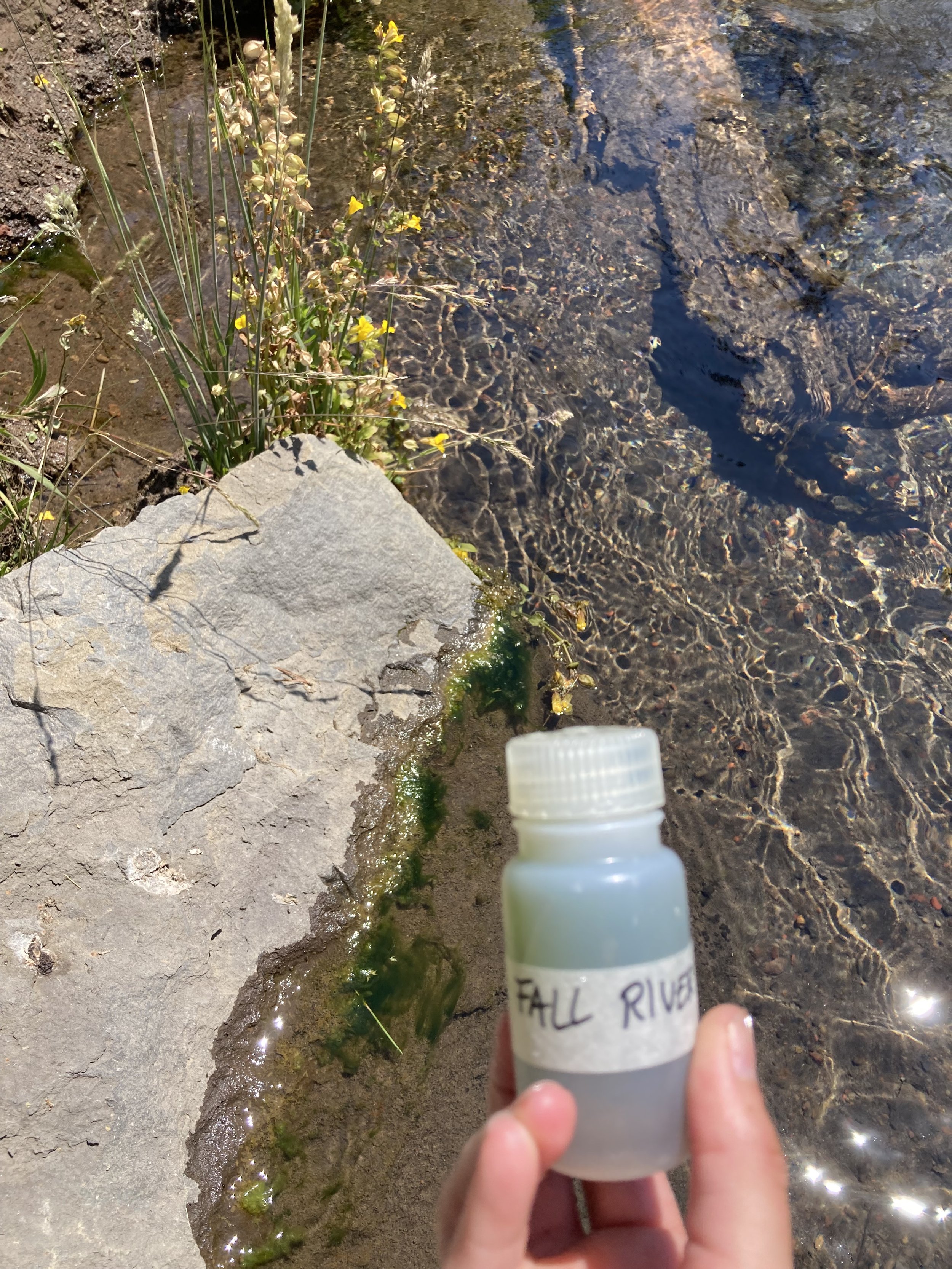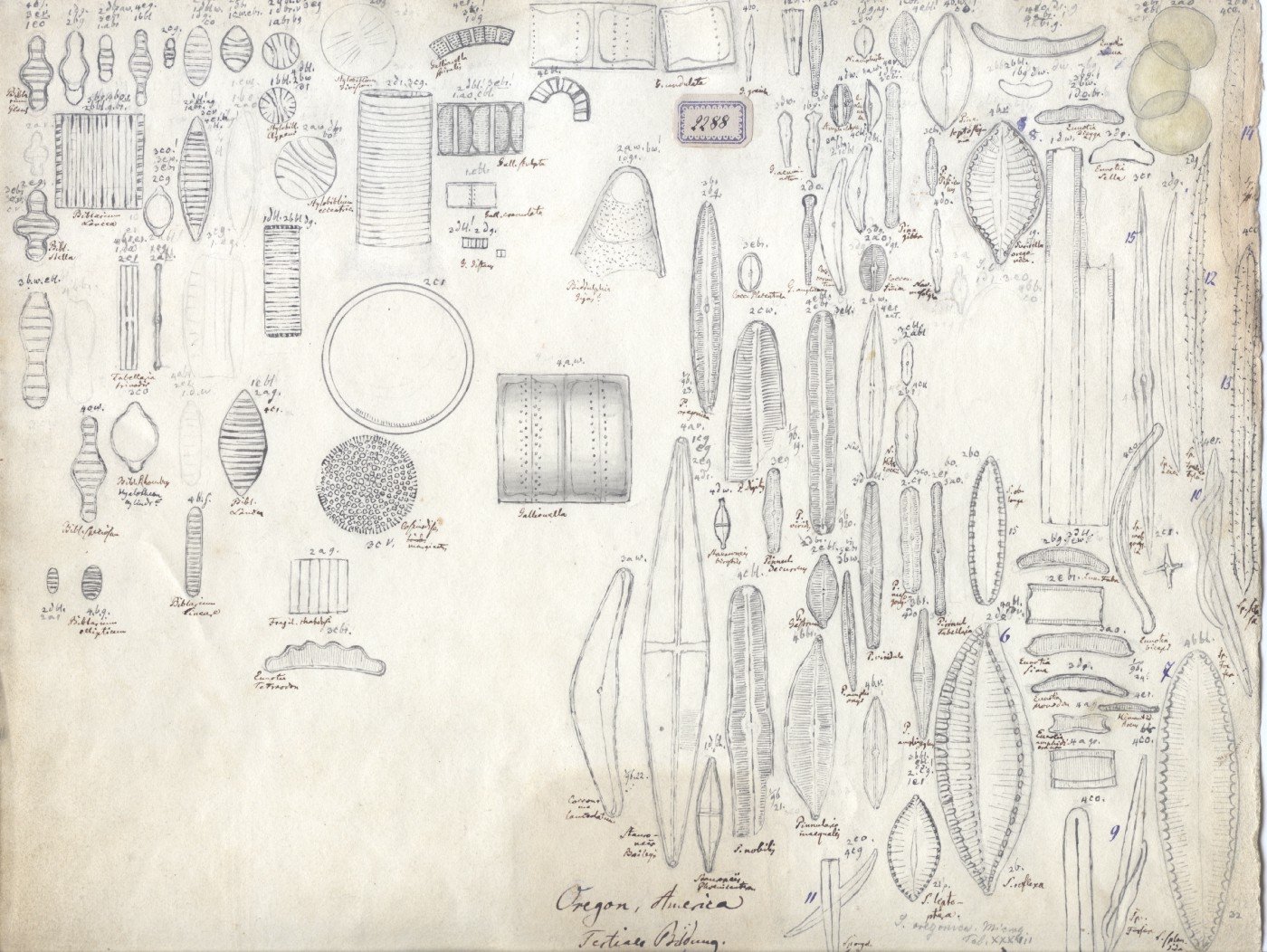The Fall River near Bend, Oregon
The Fall River at Bend, Oregon, 2022 — Ink, watercolor, algae pigment, and forest fire charcoal on paper
The Fall River near Bend, Oregon bears the historic name of the Deschutes River, or River of Falls. Located near Bend, Oregon, this beautiful river erupts from a series of springs and feeds into the Deschutes River. Like the piece from the Deschutes River at Bend, Oregon, this sample is from the Frémont Expedition and was collected in 1843 somewhere along the Deschutes River.
Oregon Freemont. 60 mittlere Schicht. Notiz: No. 60 Freemonts Report Fossil (fluviatile) Infusoria banks of Riviere aux Chuttes Oregon
Oregon, aux Chuttes. Fremont 1843 1. N.59 Columbia River Longit. 121° Latit.44 1/2° Bailey Aug. 1848 500 Fuss hoch darüber 100 Fuss dieser Gestalt und oben [andere] vulk.[…]
The latitude and longitude listed locate the sample approximately at Bend, Oregon, although the exact location is in the now Deschutes National Forest.
Partial map of the first and second John C. Frémont Expeditions mapping what was then Oregon Territory and the disputed California Territory, 1845.
I have the highest level of confidence in the sample location for these particular entries. Latitude, longitude, and consistent collection dates make these samples easy to pinpoint. Bend, Oregon, once known as Farewell Bend due to it’s emigrant location for river fording. The Frémont Expedition is known to have visited and explored this area, clearly outlined in the maps produced from the expedition. Home to multiple first nations tribes like the Confederated Tribes of Warm Springs, Bend has been an important river crossing and population site for thousands of years.
I took two samples from this location, both flowing water with sediment as well as scraping green algae that was growing on rocks. This sampling technique covered both the “confervae” or green filamentous algae and the “biolith” soil and sediment samples that are mentioned in the historical record.
All samples for this river are given their historical per-standardized name aux Chutes, or Fall River. I chose Fall River specifically to sample because it bears the historical name of the Deschutes and relates to the larger body of water as a tributary. Like much of the Deschutes River, the Fall River is heavily impacted by human intervention. This short 12 mile tributary contains a historical fire guard station, campground, and fish hatchery that is used to stock the river.
Sample locations along the Fall River. I sampled both sediments and filamentous algae.
Dr. Ehrenberg’s observations
Columbia River, Oregon organisms observed by Dr. Ehrenberg. Images used with permission from the Natural History Museum of Berlin.
In addition to Dr. Ehrenberg’s illustrations for Microgeologie and his large assemblages, this small work with a compact composition. This oval contains Cocconeis gemmata, Discoplea oregonica, Eunotia Westermanni, Gomphonema herculeanum, Mamilla, oregonica, ; Gallionella crenata, Fragilaria amphicephala, Pinnularia oregonica, ; Rhaphoneis oregonica as listed by the database. I also included the larger Oregon composition which I believe probably depicts microorganisms from the Deschutes River.
My observations
My observations align with the historical record for this sample and with the other Deschutes samples, with a emphasis on Cymbella mexicana and other Cymbella species. Also included are chain-forming algae like Fragilaria clearly shown in the larger Oregon drawing by Ehrenberg, and some very lovely stalked Gomphonema.
I also really enjoyed picnicking by the beautiful springs at the mouth of the river, watching the trout float in the crystal clear water.
The beautiful Fall River erupts from a series of underground springs and flows 12 miles into the Deschutes River near Pringles Falls.













